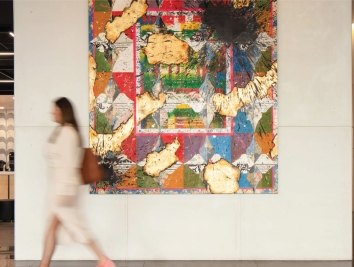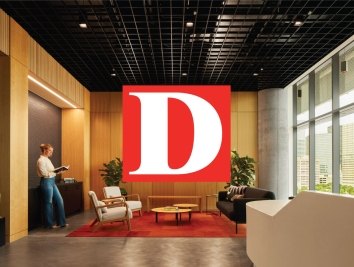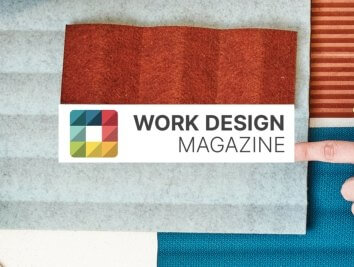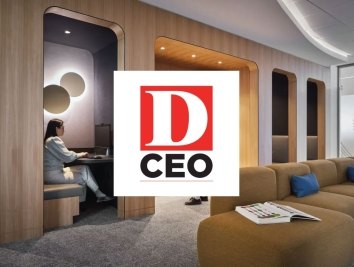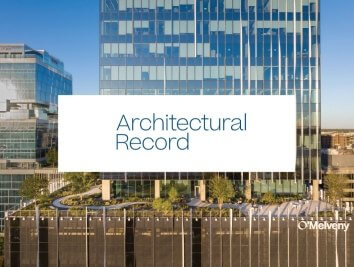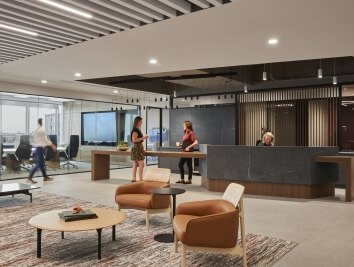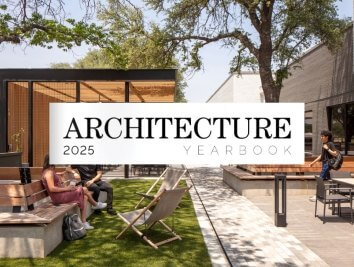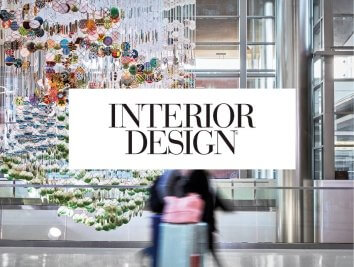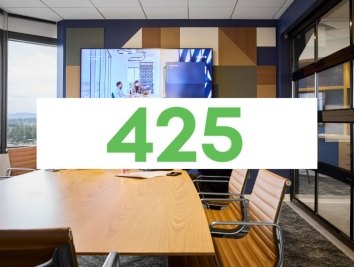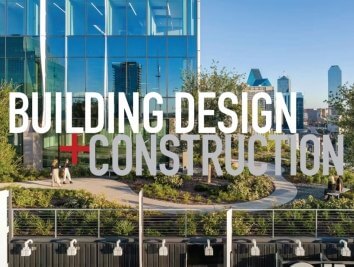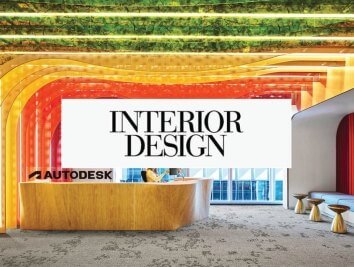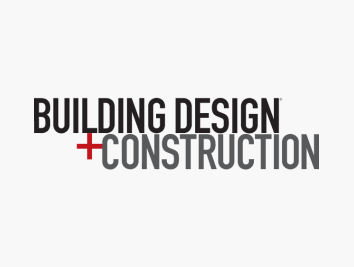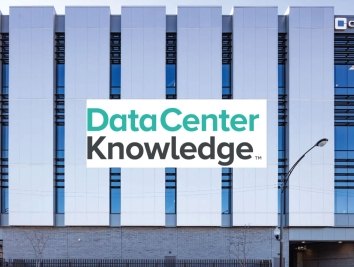Neurodiversity in the Workplace
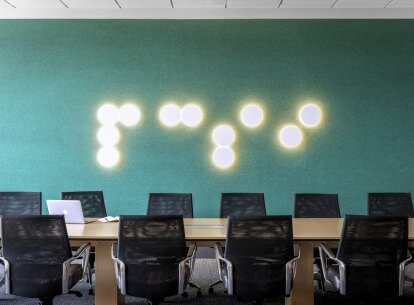
As wellness, inclusivity, and kindness find their crescendo in national workplace conversations—with Gen Z and future talent prioritizing commitments to equity and inclusion, and employers celebrating diverse voices and perspectives -- office design has both the opportunity and challenge to respond not only to the different ways we work, think, and learn but also the differences in how we experience and perceive our environments.
Responding to the diversity of the human brain, or ‘neurodiversity’ provides insights into how elements of the built environment, including privacy, lighting, acoustics, and textures, impact our experience and productivity. From autism and ADHD to dyslexia, variations in neurocognitive functioning can profoundly shape how we see and experience spaces. As we explore the value of neurodiversity in the workplace, Corgan continues to uncover new potential for design to create a more human, empathetic workplace for everyone.
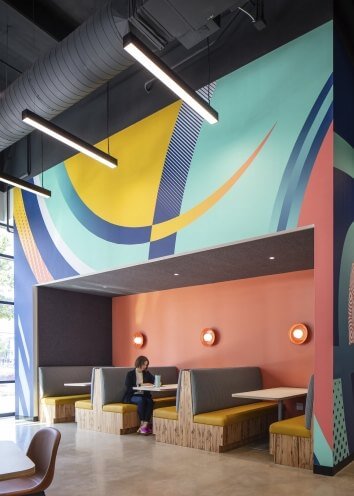
What is neurodiversity?
Neurodiversity speaks to the ways people perceive spaces, relate to others, and interact with their environment. Up to 15 to 20% of the U.S. population is neurodiverse and includes people with learning differences, including autism, dyslexia, attention deficit hyperactivity disorder (ADHD), post-traumatic stress disorder (PTSD), and other mental health conditions. (“Neurodiversity in the Workplace,” EARN, Nov 11, 2022.)
Many people with learning differences have higher-than-average abilities; research shows that some conditions, including autism and dyslexia, can bestow special skills in pattern recognition, memory, creativity, and mathematics. Their new and different perspectives create opportunities for innovation and creativity, add additional accuracy to projects, and contribute to a well-rounded set of team functions. Yet those affected often struggle to fit the profiles sought by prospective employers or may find their physical environment particularly challenging.
Gen Z and the future of inclusive design
Gen Zers have also dramatically shifted how we approach our workplaces and what we expect from them—challenging the office to more thoughtful and meaningful considerations for an inclusive culture that articulates values and awareness of mental wellness. When looking for work, these newcomers emphasize mental health, sustainability, and kind, empathic workplaces that support diversity, equity, and inclusion (DEI).
According to Indeed, 95% of Gen Zers are considering a job with more work-from-home flexibility and 47% say they’re very likely to change jobs within the next 12 months.
Offering flexibility, among other perks, can help attract and retain young talent.
As the chasm between the traditional in-office work experience and the desires of Generation Z continue to widen, workplaces are matching their moral codes by designing supportive workplaces with comfort, wellness, connectivity, and desirable amenities. Continued conversations and the growing demand to support these values have welcomed a more expanded definition of DEI—underscoring and celebrating the power of neurodiverse populations.
From autism and ADHD to dyslexia, variations in neurocognitive functioning can profoundly shape how we see and experience spaces.
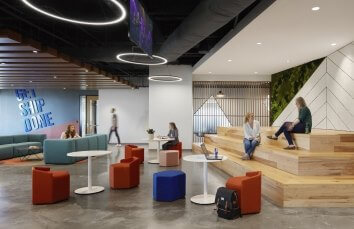
Companies are responding by designing office spaces that address the needs of a neurodiverse workplace, and in doing so are creating healthier, more personalized spaces where all people feel respected, included, valued, and comfortable at work. In turn, the environment becomes a tool to unlock the unique skills, strengths, and talents of those who may process or respond to their environment differently.
Designing an inclusive workplace is layered and complex. However, the power of design offers several opportunities for a comprehensive approach to physical and mental wellness, empowering staff with choice and control over their environment, and supporting the unique needs of a more diverse workplace.
Inclusive Design: The evolution of the workplace
Balancing beauty and function, the evolution of workplace design explores the possibilities of sound, light, spatial organization, color, textures, and movement to influence how we feel and behave. These design features also provide several possibilities to create a more intuitive, empathetic, supportive, and human environment for those with diverse physical and mental needs.
Encouraging movement throughout the day
Switching positions, standing, pacing, and walking can boost mood and focus, increase productivity and morale, and contribute to overall health and well-being -- especially for individuals struggling to maintain focus or susceptible to mood fluctuations.
Purposefully designed spaces and tools give people permission to step away from their desks: meditation apps, circulation paths, wellness rooms, fitness centers, boardwalks for pacers, and outdoor areas provide outlets to move through the space in different ways. Workplace strategies might include twenty minutes of letting-go time in an adult funhouse, playing bocce ball or ping pong, or listening to music to release tension and stress before engaging in focus work.
Furniture provides solutions to facilitate different postures and work styles: sit-to-stand workstations, soft seating, stairstep seating, informal lounges, café tables, and privacy booths boost engagement and concentration. Spatial design and wayfinding offer a sense of rhythm, order, and safety with lighting, color, landmarks, art pieces, and monumental staircases while providing more interactive and interesting moments to engage.
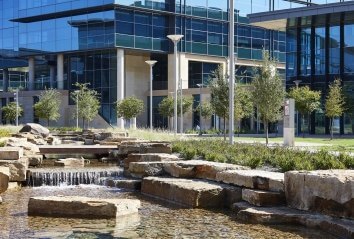
Reducing visual and auditory stimulation
Visual and acoustical interventions can minimize distractions for those with sensitivity to their environment. Simple solutions like decorative acoustical partitions, semi-private workstations, wall dividers, and pendant light fixtures provide important controls while adding attractive design elements throughout the space.
Additional accommodations such as headphones prevent auditory overstimulation, and small meeting rooms, booths, and pods away from high-traffic areas offer privacy for heads-down work; stimulus-free wellness rooms and outdoor areas serve as a refuge for respite and retreat.
Portable lamps, dimmers, and warm LED lighting can be customized for individual needs. Natural light supports circadian rhythms and improves well-being, replacing intrusive fluorescents. Wall-to-wall glass conference rooms with built-in mega shades, frosted glazing, or graphic film allow light to enter a space while providing enough filters to minimize visual distractions from the outside—striking a balance between mitigating outside stimuli and preserving connectivity.
Connecting with nature to promote mental wellness
Connection to nature has long been known to promote health and wellness, boost productivity and mood, and help with a better night’s sleep, contributing to our overall performance, happiness, and well-being. Employers are responding and prioritizing the need to be exposed to the outdoors by creating spaces with abundant natural light, biophilia, and outdoor areas. Floor-to-ceiling windows and skylights help sync circadian rhythms so employees stay more focused and alert; indoor plant materials and colors from nature add beauty and affect mood; landscaped Zen gardens, walking trails for fitness and reflection, and terraces and patios provide spaces for employees to relax or connect.
The future of the workplace
While the talent pipeline has welcomed a more comprehensive reflection of our office policies and design, the future of a more inclusive, diverse, and equitable workplace has benefits that go beyond attracting and retaining top talent. Rather, it answers the challenge and opportunity for design to unlock our individual and collective potential through human-centric spaces that foster belonging, acceptance, and respect for how we work, learn, and relate to one other.
Neurodiversity
As wellness, inclusivity, and kindness find their crescendo in national workplace conversations—Gen Z and future talent prioritizing commitments to equity and inclusion and employers celebrating the value of diverse voices and perspectives, office design has both the opportunity and challenge to respond to not only the different ways we work, think, and learn but also the differences in how we experience and perceive our environments.






